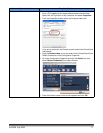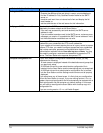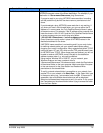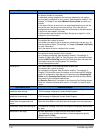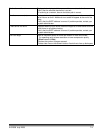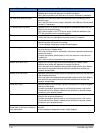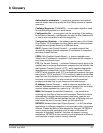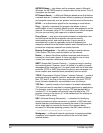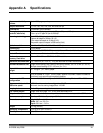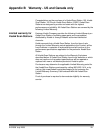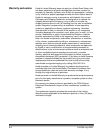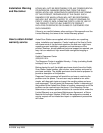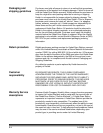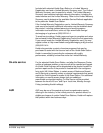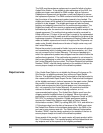
8-2 A-61588 July 2008
NETBIOS Name — also known as the computer name in Microsoft
Windows, the NETBIOS name is a unique name for the device. Only 15
characters can be used.
NT Domain Server — a Microsoft Windows based server that defines
a network domain. A network domain defines a grouping of computers
and computer resources such as; printers, mail servers and file servers.
NTLM — an authentication algorithm for accessing an email server.
Ping — typically a command line program that allows a user or
administrator to see if a specific device is active and responsive on the
network. For example, ping 127.0.0.1 will test to see if a local computer
(the one you are using) can respond to a network request.
Proxy Server — acts as an intermediary between a workstation user
and the Internet so that the enterprise can ensure security,
administrative control, and caching service. A proxy server is
associated with or part of a gateway server that separates the
enterprise network from the outside network and a firewall server that
protects the enterprise network from outside intrusion.
Remote Configuration — the ability to configure network devices
(Scan Station 100) from a remote location on the network.
Router — a device that allows multiple computers and devices to
connect to a local area network. A router can also be one of many
routers that comprise a wide area network (WAN).
SMTP (Simple Mail Transfer Protocol) — is protocol used in sending
and receiving email. However, since it is limited in its ability to queue
messages at the receiving end, it is usually used with one of two other
protocols, POP3 or IMAP, that allows the user to save messages in a
server mailbox and download them periodically from the server.
TCP/IP (Transmission Control Protocol / Internet Protocol) — a suite of
protocols tailored to specific needs for advanced networking. Named
after TCP and IP, the first of the many protocols in the suite. TCP/IP
forms the basic standard for communication over the Internet.
TCP Port — special number in the header of a network data packet,
TCP ports are used to map data to computer processes or applications.
For example, a server receiving incoming TCP data packets with a
number of 21 in the header will normally map that data to the FTP
process running on the server (21 is the standard port for initiating an
FTP session with a client).
UNC (Universal Naming Convention) — a standard for identifying
servers, printers and other resources in a network, a UNC path uses
double slashes or backslashes to precede the name of the computer
and a single slash to precede the name of the resource being
accessed. In Windows operating systems, the UNC name format is:
\\servername\sharename\path\filename
Workgroup — a Microsoft network mechanism for grouping multiple
computers and computer resources without the use of an actual
network domain.



